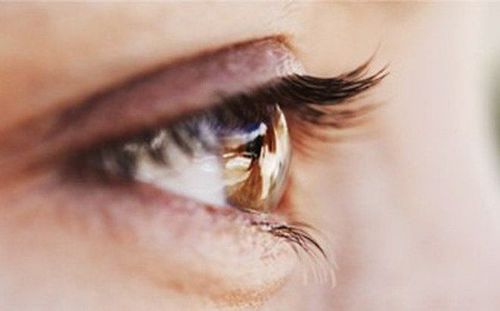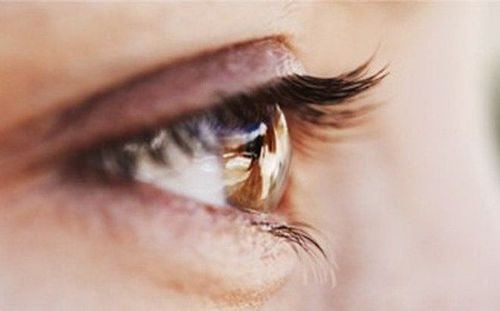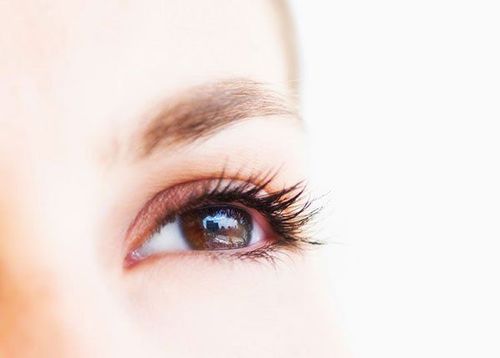This is an automatically translated article.
The article is professionally consulted by Master, Doctor Hoang Thanh Nga - Ophthalmologist - Department of Medical Examination and Internal Medicine - Vinmec Ha Long International General Hospital.
Myopia directly affects learning, the ability to receive and perceive life by sight, if left untreated, can lead to retinal degeneration and retinal detachment leading to blindness.
1. What is progressive myopia?
Myopia is the most common type of refractive error today, accounting for about 25% of the total population in the world.
A study by Hanoi Medical University surveying 250 patients from 5-18 years old showed that the highest prevalence of myopia was in primary school students, accounting for 55.2%. In addition to genetic causes such as having more than 24 genes associated with an increased risk of developing myopia, the majority of Vietnamese children have vision loss due to sitting in the wrong posture when studying, studying intensely, using equipment. too much electronics and don't get in the habit of getting regular eye exams.
Myopia is divided into 3 main groups: mild myopia, moderate myopia and severe myopia. In which, severe myopia is distinguished from the other two groups of myopia by the degree of myopia (diop).
Mild nearsightedness is a person with myopia number <= 300D (diopter) Moderately nearsighted is a person with myopia number from 300 to 600D (diopter) Severe nearsightedness is a person with myopia number above 600D (passing). At 18 years old, the degree of myopia is usually stable, severe progressive myopia is a disease accompanied by degeneration of the posterior part of the eyeball.
2. Common severe myopia complications
Most people with myopia are only concerned with the inconvenience in daily life, aesthetic problems when wearing glasses ... but few people know that severe myopia for a long time also increases the risk of eye diseases higher than the average person. Notably, severe progressive myopia can cause many dangerous complications, leading to other eye diseases as follows:2.1. Weakness
Amblyopia is a condition of visual impairment caused by the brain's inability to fully perceive the images that the eye transmits. Amblyopia occurs when myopia is severe but the eye has to adjust too much, the retina is not stimulated to transmit image signals clearly.
Amblyopia can be treated if detected early by training the eyes when the child is before 12 years old. After 12 years of age, even with exercise or eye surgery, it is still difficult to restore 10/10 vision because the eyes have developed stably like an adult.
2.2. Vitreous retinal detachment
The retina is the nerve membrane at the bottom of the eye, which plays a role in absorbing light and converting them into nerve signals that are sent to the brain for analysis.People with high myopia have anteriorly protruding eyeballs that will bend the retina, making the retinal peripheral area thinner and gradually degenerating. If this condition persists, the nerve cells will lose adhesion and cause more serious complications such as tearing, retinal detachment or vitreous hemorrhage.
2.3. Externally or alternately strabismus
Strabismus is a condition where the pupils of both eyes are not in the normal balance position; either side or both will be displaced from the eyeball axis. In people with high myopia, poor eye muscle coordination coordination leads to strabismus or alternate strabismus, causing aesthetic loss and visual impairment.
Moderate strabismus can be temporarily overcome by wearing glasses suitable for myopia, but if the patient has too high of myopia and cannot wear glasses with the correct number, the strabismus phenomenon cannot be completely corrected.
2.4. Open angle glaucoma
Human eyes with advanced myopia (over 8 degrees) have a long eyeball that stretches the layers of the optic nerve fibers, making this connective layer thin and weak. In case the patient has symptoms of partial visual field loss corresponding to the lesion on this nerve fiber layer, it is likely that he has open-angle glaucoma. People with this disease will have their vision gradually narrow to the center, the images in the corners and around will fade and then disappear completely.2.5. Other eye diseases with severe myopia complications
Glaucoma Retinal tear and retinal detachment

Tăng nhãn áp là một trong những biến chứng của cận thị nặng
3. Methods of treating progressive myopia
To treat progressive myopia in children, it is necessary to prevent the onset of myopia and limit the increase in myopia in children.
3.1. Use low concentrations of atropine
Atropine is a group of non-selective muscarin antagonists. In the eye it has the following effects: pupil dilation and accommodation paralysis; does not cause side effects such as: glare, glare, difficulty seeing near... In addition to controlling increased myopia, low concentrations of atropin are also used to control the onset of myopia in children.
3.2. Use contact lenses and frames
Contact lenses, also known as contact lenses, are a type of medical device that makes direct contact with the surface of the eyeball. Thanks to the effect of reducing blurred images in the peripheral retina when using some of the following special glasses, it helps to limit the increase of myopia. .
3.3. Scleroplasty surgery
Currently, to correct rapidly progressive myopia, the most common treatment is still the lasik method. Using specialized tools, the doctor will create a corneal flap and then lift it up to expose the lower cornea. This part of the cornea will be affected to change the structure to meet the requirements set forth, then the corneal flap will be put back in its old position.
However, this method is only indicated for patients over 18 years old. This is a gentle, minimally invasive surgery with no significant complications that reduces the progression of myopia by almost 3 times.
3.5. Increase outdoor activity and reduce close-up time
Many studies abroad show that the group of children who participate in outdoor activities more, the rate of myopia increase is much lower than the group of children who participate less. In addition, reducing the time spent on near vision tasks also contributes to the control of progressive myopia in children.
4. How to prevent myopia from progressing
Prevention and prevention of myopia in children need to ensure enough light when children read or write. Note that the appropriate light is not too bright or too dim as both are bad for the eyes. Children should keep their reading and writing eyes at least 30cm away. Sit about 50cm away from the computer. Limit reading comics with small or blurry fonts. Children do not eat while reading stories, walk and watch, do not lie down to read. Eyes need to rest for a while, look away to relax after an hour of reading, watching TV. Go to bed early, get enough sleep and be on time. Proper and sufficient nutrition care: vitamins A -C-E, minerals, zinc, selenium... Studying in combination with fun and extracurricular activities, exercise and sports will limit the increase of myopia.

Bổ sung đầy đủ vitamin C sẽ tốt cho thị lực
5. Doctor's advice
Many people think that myopia is a simple refractive error, just need to wear glasses, but in fact, myopia progresses very quickly if not treated, it will cause degenerative eye disease, loss of vision and blindness.
For mild cases, with little progress, children can wear glasses and medical treatment to reduce the progression of myopia and prevent the occurrence of bad complications that cause vision loss for children.
With cases that progress quickly and myopia is increasing, parents should take their children to see a specialist for advice and choose the best treatment method.
Conclusion, complications when myopia progresses are very dangerous, so when nearsightedness, you should regularly go to the nearest specialized eye hospital to check your nearsightedness to promptly find yourself. effective treatments.
Any questions that need to be answered by a specialist doctor as well as customers who need medical examination and treatment at Vinmec International General Hospital, you can contact Vinmec Health System nationwide or register Register online HERE.
MORE:
What is the difference between farsightedness and presbyopia? Astigmatism is as worrying as nearsightedness Farsightedness: When to operate?













